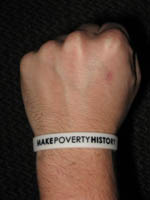News
Poverty in America
Dec 28, 2008

Because it is likely politically infeasible to revise the current poverty measure in a way that results in substantially higher poverty thresholds or rates, the first criticism should be addressed by adopting a new basic income adequacy standard, one that is not labeled a poverty measure.1In other words, since it is politically inconvenient to call a spade a spade, let’s call it a manual fill relocation instrument instead. If we adopt enough euphemisms, we might be able to eliminate poverty altogether in this country.
Perhaps we are being too hard on a report just published by the Center for Economic and Policy Research (CEPR) entitled Measuring Poverty and Economic Inclusion: The Current Poverty Measure, the NAS [National Academy of Sciences] Alternative, and the Case for a Truly New Approach (.pdf, 47 pp., 918Kb), by Shawn Fremstad.
However, the report does seem to come up with some odd conclusions out of the blue, e.g., “To be consistent with public opinion, an at-risk-of-poverty or economic-inclusion standard should be set at roughly 60 percent of median income.”2 Why 60 percent? Why not 55 or 65 percent? How can this method be justified in a period (such as the present) when median income is arguably decreasing, with members of the middle class falling into poverty every day? And why should a poverty threshold be set relative to others’ median income rather than to a precise figure, adjusted for geographic differences, below which an income is inadequate to provide the necessities of life?
The report is nonetheless worth reading, if only to understand how poverty has been measured over the years, and to appreciate the agonizing contortions our government has gone through over the years to minimize the number of poor we acknowledge in our society. The bottom third of workers in the U.S. fall below poverty—excuse us, economic-inclusion—levels. That is one out of three, not one out of ten or one out of fifty—numbers which a fabulously wealthy country might actually be proud of.
And the report’s “bottom line” is stark and unambiguous: “[B]oth the current and [proposed] poverty measures are set far below the minimum amount that most Americans believe is needed to ‘get along’ in their local communities.”3 In other words, things are even worse than we have acknowledged.
____________________
1 Measuring Poverty and Economic Inclusion, p. 3
2 Ibid.
3 Op. cit., p. 4
Copyright © 2008 All Together Now.